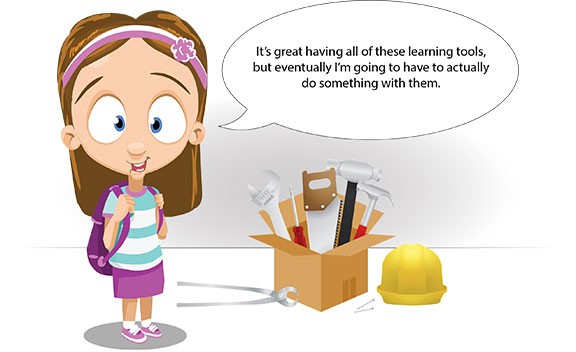The Formative Period
The Formative Period can be a period of rapid growth in student knowledge base and performance potential. If teachers were successful in building a learning environment with behavioral and academic rituals and routines that equipped all students for success and if the students started to master active listening, reading to learn, effective note taking, and prioritizing learnings, teachers can reduce performance gaps and support nontraditional learners.
If teachers haven’t been successful in developing these foundation pieces, academic leaders need to consider extending their opening activities for one or two more weeks. To get maximum growth in the Formative Period, students need to work in an academic environment that prepares them for success.

Rhythm of the Learner Year Timeline


The Formative Period is a time when the focus is on building proficient learners. Content is covered and students begin learning to use what they learn, but there is a strong “building an efficient learner” strand in the curriculum.
Timeframe
The Formative Period usually begins after the third week of school, but that can be delayed if opening activities have not been successful.
Maximizing growth and potential requires the development of an effective core set of competencies in all students, so it may be necessary to delay the beginning of the formative work. The Formative Period lasts until mid-December or early January.
Goals
The goals for the Formative Period focus on making all students effective learners. Emphasis is on the development of formative work habits, high levels of engagement, formative assessments, and independent use of learning. In an effective Formative Period, students become independent learners and independent performers.
Priorities for the Formative Period
Academic Leaders
- Monitor all systems and revise as needed.
- Develop or adapt observation tools for the Formative Period.
- Visibly support teachers and students in classrooms and extracurricular activities.
- Visit all classrooms during instruction time, looking for management and academic rituals and routines, evidence of standards focus, teacher planning for learner work, and student engagement.
- If problems are identified, meet daily with leadership team to form plans B and C.
- Participate in PLC discussions and provide leadership in identifying priority needs and building targeted support plans.
- Evaluate teacher/student compatibility and move students if needed to ensure student success.
- Provide assistance (e.g. a part-time, retired teacher) to assist teachers in developing and of Formative Period student profiles.
- Collect and analyze data on systems and teacher performance and meet regularly with academic leaders to refine systems and evaluate/support teachers.
- Meet with leadership team and PLC groups to create a vision of the Calibrating and Assessment Periods and begin developing strategic and plans for calibration and testing.
School Teachers
- Fine-tune academic and behavioral rituals and routines.
- Monitor attendance and tardiness and intervene as needed.
- Expand the classroom culture to embrace the use of discipline-specific and formal language in all classroom communications.
- Introduce directed learning and thinking work and build student competence in attending, acquiring, organizing, and creating meaning.
- Embed critical reading, critical thinking, problem-solving, decision-making, and critical writing competencies.
- Provide teacher and peer support to ensure student success, but gradually build student independence as learner, thinker, and performer.
- Develop strategies for purposeful (e.g. reading to learn), critical, and analytical reading.
- Monitor student learning work and update student profiles.
- Provide targeted support for all students not mastering learning competencies.

Interested in Reading the Book?
This book is the aggregation of the research and fieldwork that has gone into our approach to working with struggling schools as well as adding value to blue ribbon schools. We tried to write it in a step-by-step, show your math, chunked out format so that if the leadership team were never able to attend an Ed Directions PD, they could still plan and monitor their school year with the student-focused understanding of the Rhythm of the Learner Year in mind.

